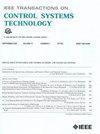混合现实环境与蜂群机器人的高维连续化控制
IF 4.9
2区 计算机科学
Q1 AUTOMATION & CONTROL SYSTEMS
引用次数: 0
摘要
许多控制大规模多代理系统的新方法都是基于系统动态的宏观表示,即大型集合的连续近似形式。这些技术是在代理数量无限的极限情况下开发的,通常只能通过数值模拟来验证。在这里,我们介绍一种用于测试蜂群机器人技术的混合现实装置,重点关注机器人蜂群的宏观集体运动。这种混合装置结合了真实的差分驱动机器人和虚拟代理,以创建一个规模可调的异质群。我们还将基于连续化的机器人群控制方法扩展到了更高的维度,并通过实验评估了这些方法在新平台中的有效性。我们的研究证明了该平台在进行大规模蜂群机器人实验方面的有效性,并对利用连续化方法的控制算法提出了新的理论见解。本文章由计算机程序翻译,如有差异,请以英文原文为准。
Mixed Reality Environment and High-Dimensional Continuification Control for Swarm Robotics
Many new methodologies for the control of large-scale multiagent systems are based on macroscopic representations of the system dynamics, in the form of continuum approximations of large ensembles. These techniques, developed in the limit case of an infinite number of agents, are usually validated only through numerical simulations. Here, we introduce a mixed reality setup for testing swarm robotics techniques, focusing on the macroscopic collective motion of robotic swarms. This hybrid apparatus combines real differential drive robots and virtual agents to create a heterogeneous swarm of tunable size. We also extend continuification-based control methods for swarms to higher dimensions and experimentally assess their validity in the new platform. Our study demonstrates the effectiveness of the platform for conducting large-scale swarm robotics experiments, and it contributes new theoretical insights into control algorithms exploiting continuification approaches.
求助全文
通过发布文献求助,成功后即可免费获取论文全文。
去求助
来源期刊

IEEE Transactions on Control Systems Technology
工程技术-工程:电子与电气
CiteScore
10.70
自引率
2.10%
发文量
218
审稿时长
6.7 months
期刊介绍:
The IEEE Transactions on Control Systems Technology publishes high quality technical papers on technological advances in control engineering. The word technology is from the Greek technologia. The modern meaning is a scientific method to achieve a practical purpose. Control Systems Technology includes all aspects of control engineering needed to implement practical control systems, from analysis and design, through simulation and hardware. A primary purpose of the IEEE Transactions on Control Systems Technology is to have an archival publication which will bridge the gap between theory and practice. Papers are published in the IEEE Transactions on Control System Technology which disclose significant new knowledge, exploratory developments, or practical applications in all aspects of technology needed to implement control systems, from analysis and design through simulation, and hardware.
 求助内容:
求助内容: 应助结果提醒方式:
应助结果提醒方式:


